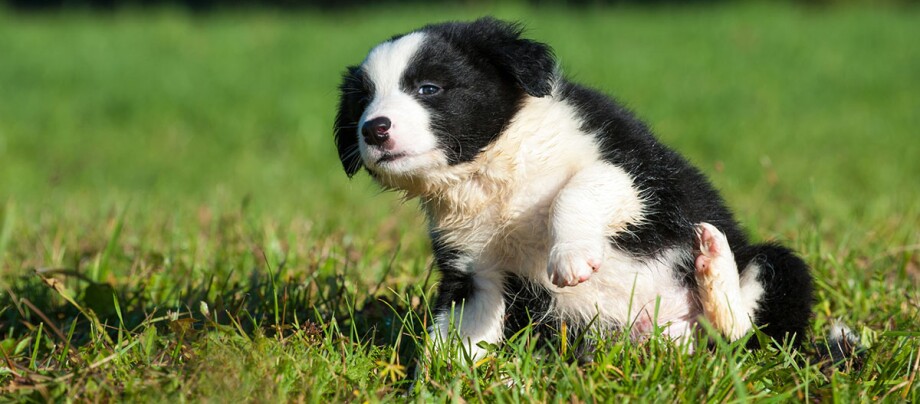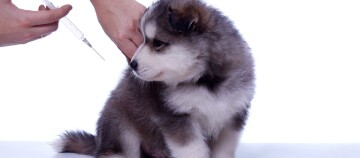Does Your Puppy Have Fleas? What to Do When a Dog Brings Home Fleas
03.01.2023 - Reading time: 3 minutes

Puppies that are still in the whelping box are the perfect prey for these pesky parasites, as the warm environment and close proximity of the animals create an ideal breeding ground for the bloodsuckers. However, young pups also often catch fleas at puppy school. When a dog brings home a flea infestation, this often only becomes apparent once the fleas have multiplied and spread all over the house.
How to spot a flea infestation in your puppy
Although a flea infestation may start off completely asymptomatic, your pup will be scratching areas where it has been bitten frequently and conspicuously, as these will be very itchy. Some spots may even become bloody as a result of scratching. Adult fleas are visible to the naked eye: these hopping parasites are about three millimetres in size and reddish-brown in colour. Dog and cat fleas can also infest humans. Their bites are very itchy and usually appear in clusters, making them quite easy to identify.
To identify a flea infestation with certainty, it is best to use a flea comb, stroking it against the direction of the fur growth. Place a damp white cloth next to you before you start and use it to wipe anything that gets stuck in the comb. You may spot live fleas in the process, but the comb will usually pick up their droppings which show up as red spots on the cloth. Red spots are a sure sign that your pet has fleas. You can also check your dog’s bedding for droppings.
Fleas in puppies: ask you vet about possible treatment options.
A flea infestation should be dealt with as quickly as possible, as these bloodsuckers can transmit diseases and tapeworms. In addition, fleas multiply very quickly; in the worst case scenario, they can become such a nuisance that only an exterminator can help.
Treating puppies under eight weeks old that still live with their mother for fleas is more complex than treating adult dogs, as conventional chemical flea products are unsuitable for very young pups. This is because they are still unable to break down the chemicals, which can result in serious side effects or even organ damage as the flea poison builds up in their body. Such side effects can include respiratory distress, vomiting, paralysis and even neurological damage. It is therefore important to use only products that are also suitable for young dogs.
If you find fleas on your puppy, contact your vet. Remember that pregnant and lactating female dogs too should only be treated with products that are safe for puppies, in order to protect them.
Why only treating your dog for fleas is not enough
Using a suitable flea treatment on your dog alone won’t solve your flea problem, far from it: fleas leave eggs and droppings wherever they go. These tiny parasites also like to hide in cracks, carpets and other places. This means you have your work cut out for you.
This is how to successfully get rid of fleas:
- First, you should wash any blankets your dog has been in contact with at a temperature of at least 60 degrees Celsius. Alternatively, you can put pillows, blankets and toys in an empty compartment in your freezer, as any flea eggs present in the items will also die if are exposed to a temperature of -15 degrees Celsius for two days.
- Otherwise, wipe toys and smooth surfaces with a hot cloth, vacuum your home thoroughly several times and dispose of the hoover bags immediately afterwards to prevent any fleas that have been sucked up from spreading in your home again.
- If you also want to treat your pet’s surrounding with flea products, make sure you check which ones are harmless to your puppy first and clean the house a gain after application.
- Other animals in the household should also be de-fleaed, and all pets dewormed at least one week later to make sure that they don’t get tapeworms.



